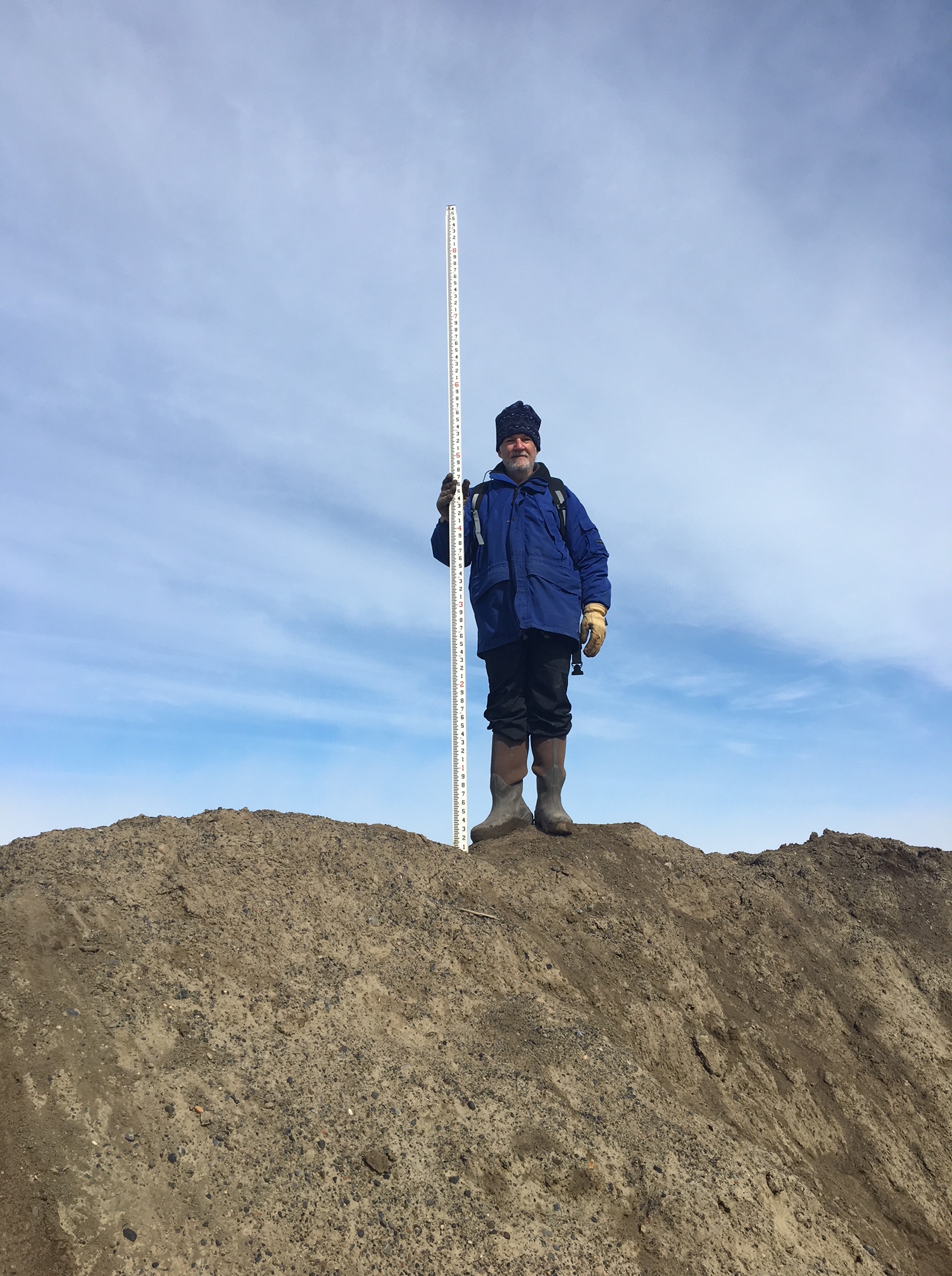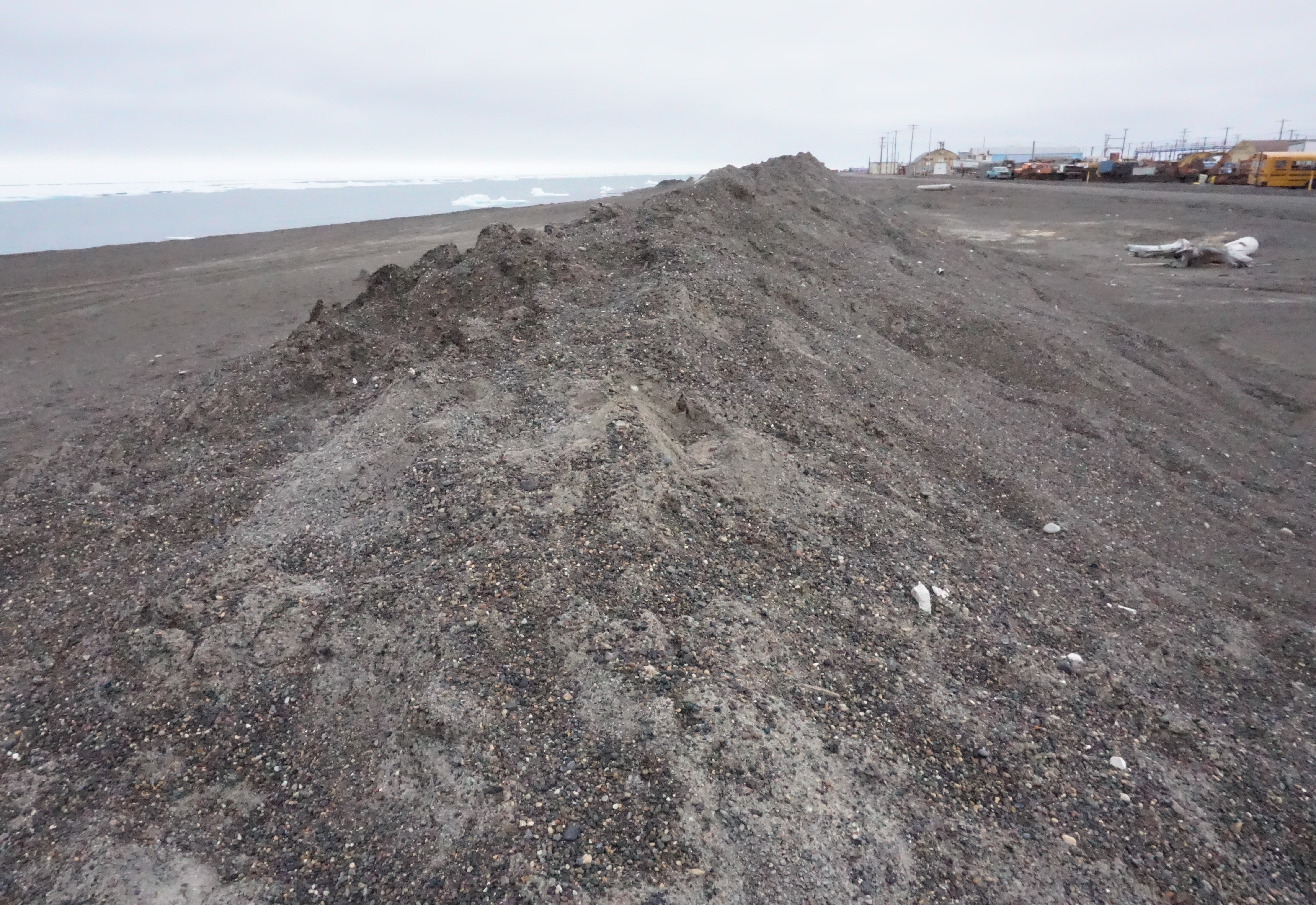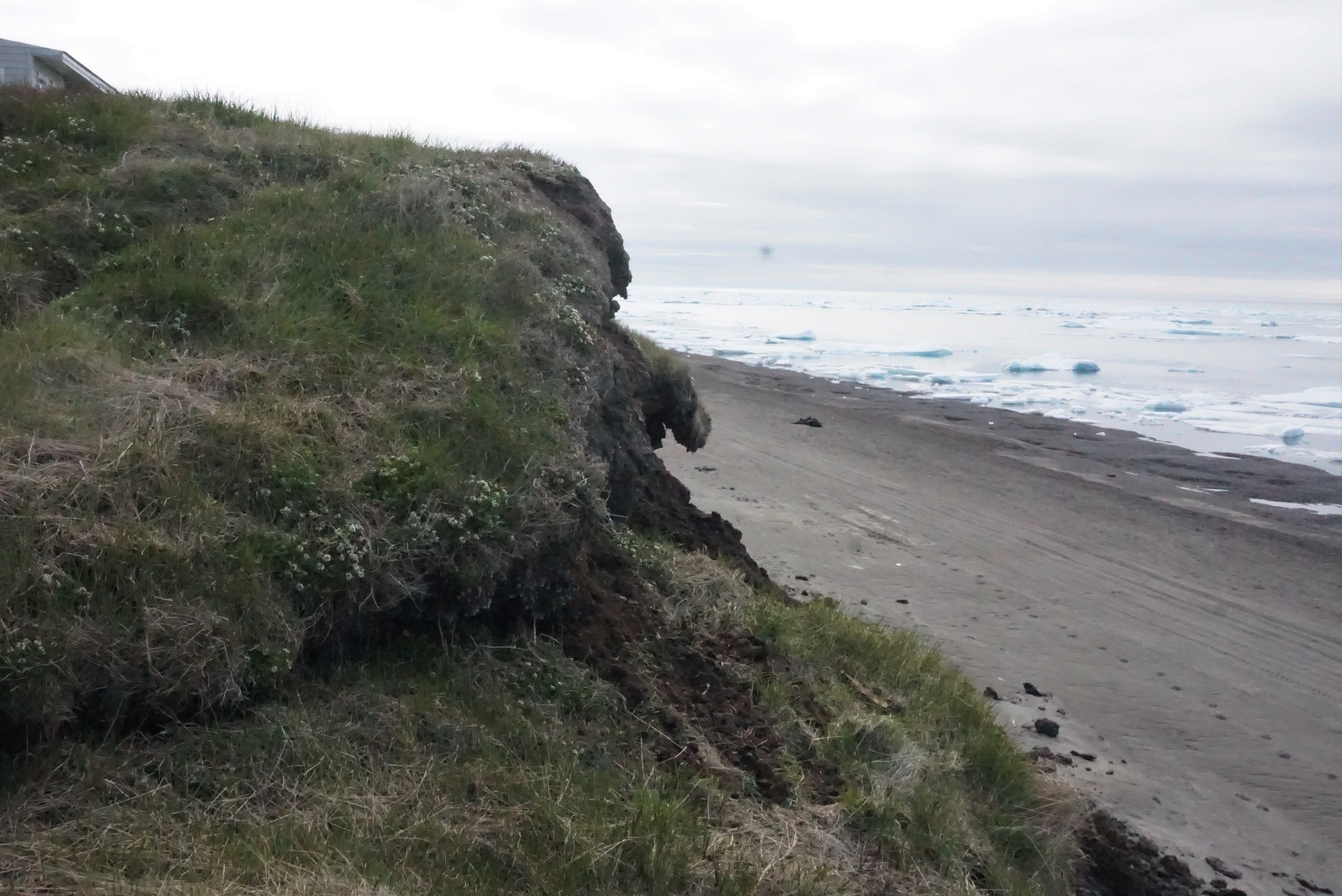With erosion threatening its shoreline, Utqiagvik’s residents are stepping up as citizen scientists
A citizen-science project aims to figure out how much of the town's shoreline will be lost in the future, allowing leaders to prepare.

To understand how worried residents in the northernmost U.S. community are about storm-wave flooding, take a walk along the beach.
In Utqiagvik, formerly known as Barrow, an earthen berm that blocks views of the Arctic Ocean has been erected from the center of town to the outskirts more than three miles away. The berm, composed of sand, dirt, rocks and, in some places, sandbags, is meant to hold back the damaging storm waves that have become regular fall occurrences as Arctic sea ice has dwindled.
Now a team of citizen scientists is calculating how much shoreline is at risk of flooding or being lost to erosion in the future.
The volunteers, participants in a project funded by University of Alaska’s Sea Grant program, are measuring beaches and quantifying nearshore ice conditions and the reach of storm waves. The project is focused on key areas where infrastructure is vulnerable — sites with pump stations, water lines and sewage ponds and homes, for example — and will help local people plan ways to mitigate climate change effects and adapt to new realities.
“I feel like it’s important to give the big picture and then how it applies to what they might be willing to do,” said Anne Garland, an anthropologist who has been coordinating the on-the-ground work in Utqiagvik.
Garland has worked on erosion issues in Utqiagvik for years. She is part of an archaeological team led by Anne Jensen that is working to excavate and protect ancient resources exposed by thawing and eroding permafrost. Jensen’s work has included the rescue of ancient gravesites, with reburial of remains in Utqiagvik’s modern cemetery.
Garland has also worked in the past with the Department of Homeland Security, which had a program to assess risks in areas vulnerable to climate change-associated natural disasters. Federal funding ran out, but Garland continued the work through a national nonprofit, Applied Research In Environmental Sciences, or ARIES, of which she is an officer.
Sea Grant now paying for the project for a two-year period. It was one of six new research projects that won funding from Sea Grant earlier this year, and Garland has partners in the project — Tom Ravens, a University of Alaska engineering professor, and Jacquelyn Overbeck, a geologist and coastal hazards expert with the Alaska Department of Natural Resources.
The project also coordinates with the Barrow Area Information Database, which has created an online collection of maps “so you can actually see the erosional changes over time since the 1940s,” Garland said. As an anthropologist, she analyzes environmental changes through a cultural lens, and her “dream,” she said, would be to get historical maps dating back to the 19th century.
As of late July, there were seven citizen volunteers who had trained to monitor the six transects at least monthly. There is also a video camera documenting wave conditions. And the project is looking at more than erosion, water and ice. It is also examining the grasses and other plants that are growing on the beach, and in some cases on the protective berm. Those plants might be useful in stabilizing the berm, Garland said.
The research is meant to address local needs, she said. “I don’t come up with my research questions unless I talk to my stakeholders first,” she said.
As sea ice continues to retreat and permafrost continues to thaw, fall storm surges, flooding and erosion events are expected to becoming more common and more severe, and locals are trying to figure out what to do about the changes. A storm last fall sent some waves over the beach berm, resulted in a disaster declaration and an estimated $10 million in damages and washed out part of Stevenson Road, the beachside route that connects Ilisagvik College, important research facilities and the Barrow High School football field to the rest of town.
There is already some action underway. After repeated floods and storm surges, local officials are planning a new road along a more inland route as an alternative link to the important facilities north of town.
Yereth Rosen is a 2018 Alicia Patterson Foundation fellow.




